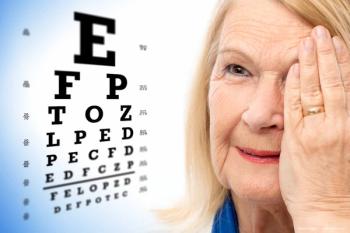
Angiogenesis 2023: Study examines GA phenotypes and progression rates in Asians, non-Asians
A study conducted by Gemmy Cheung, MBBS, FRCOphth and colleagues shows geographic atrophy (GA) lesion phenotypes, associated features, and growth rates differ between Asians and non-Asians.
Geographic atrophy (GA) lesion phenotypes, associated features, and growth rates differ between Asians and non-Asians, Gemmy Cheung, MBBS, FRCOphth, reported at the Angiogenesis, Exudation, and Degeneration meeting in Miami.
She is the Arthur Lim Professor in Ophthalmology, Duke-National University of Singapore Medical School, National University of Singapore Head, Medical Retina Department, Singapore National Eye Centre, and Head, Retina Research Group, Singapore Eye Research Institute, Singapore.
She and her colleagues conducted a multicenter retrospective cohort study1 that directly compared Asian and non-Asian patients to characterize GA and pinpoint specific differences between the ethnic groups.
Participants included in the study were 50 years and older with GA secondary to age-related macular degeneration and had been followed for 2 years or longer.
A total of 144 patients (169 eyes) were included. The 2 groups were similar in age and gender and fairly evenly divided by ethnicity.
The analysis showed numerous significant differences in GA characteristics between the groups.
The choroids in Asians were thicker (167±74 μm vs 134±56 μm, p<0.01) and the lower prevalence of drusen was lower (40.7% vs 66.3%, p<0.01).
The baseline GA area was smaller in Asians vs non-Asians (by near infrared imaging [NIR], 3.7±4.6 mm2 vs 6.3±6.8 mm2, p=0.01; by fundus autofluorescence, [FAF] 2.4±3.4 mm2 vs 8.4±9.6 mm2, p<0.01). Fewer GA foci were seen in Asians (1.7±1.3 vs 2.7±2.2, p<0.01) compared to non-Asians.
The proportion with diffuse/banded FAF junctional zone patterns was similar between Asians and non-Asians (44.2% vs 60.2%, p=0.20).
GA lesion growth was slower in Asians compared to non-Asians (NIR, 0.7 vs 1.9 mm2/year, p<0.01; FAF, 0.3 vs 2.0 mm2/year, p<0.01; NIR 0.4 vs 0.9 mm/year, p<0.001 square root transformed; FAF, 0.3 vs 1.0 mm/year, p<0.001 square root transformed).
Ethnicity, junctional zone FAF pattern, baseline GA area, and number of GA foci were associated with the growth rate of GA lesions in descending order of importance.
Eyes with baseline lesions that were 5 mm2 or greater showed the highest growth rate and difference between ethnicities was no longer significant. (2.6 vs 3.3 mm2/year, p=0.09)
The study take-home messages were that:
• The GA phenotypes in Asians compared to non-Asians were smaller lesion area, fewer foci, less bilateral GA at baseline
• Asians have with thicker choroid and fewer drusen
•The growth rate of GA is slower in Asians compared to non-Asians 0.7 vs 2.0 mm2/year; 0.4 vs 0.9 mm/year square root transformed
• Faster progression in Asians is associated with the baseline lesion area and higher number of foci and in non-Asians with a diffuse/banded FAF pattern
Reference
1. Teo K Yc, Fujimoto S, Sadda SR, et al. Geographic atrophy phenotypes in subjects of different ethnicity: Asia-Pacific Ocular Imaging Society Workgroup Report 3. Ophthalmol Retina. 2022;S2468-6530(22)00639-X. doi: 10.1016/j.oret.2022.12.013.
Newsletter
Get the essential updates shaping the future of pharma manufacturing and compliance—subscribe today to Pharmaceutical Technology and never miss a breakthrough.




